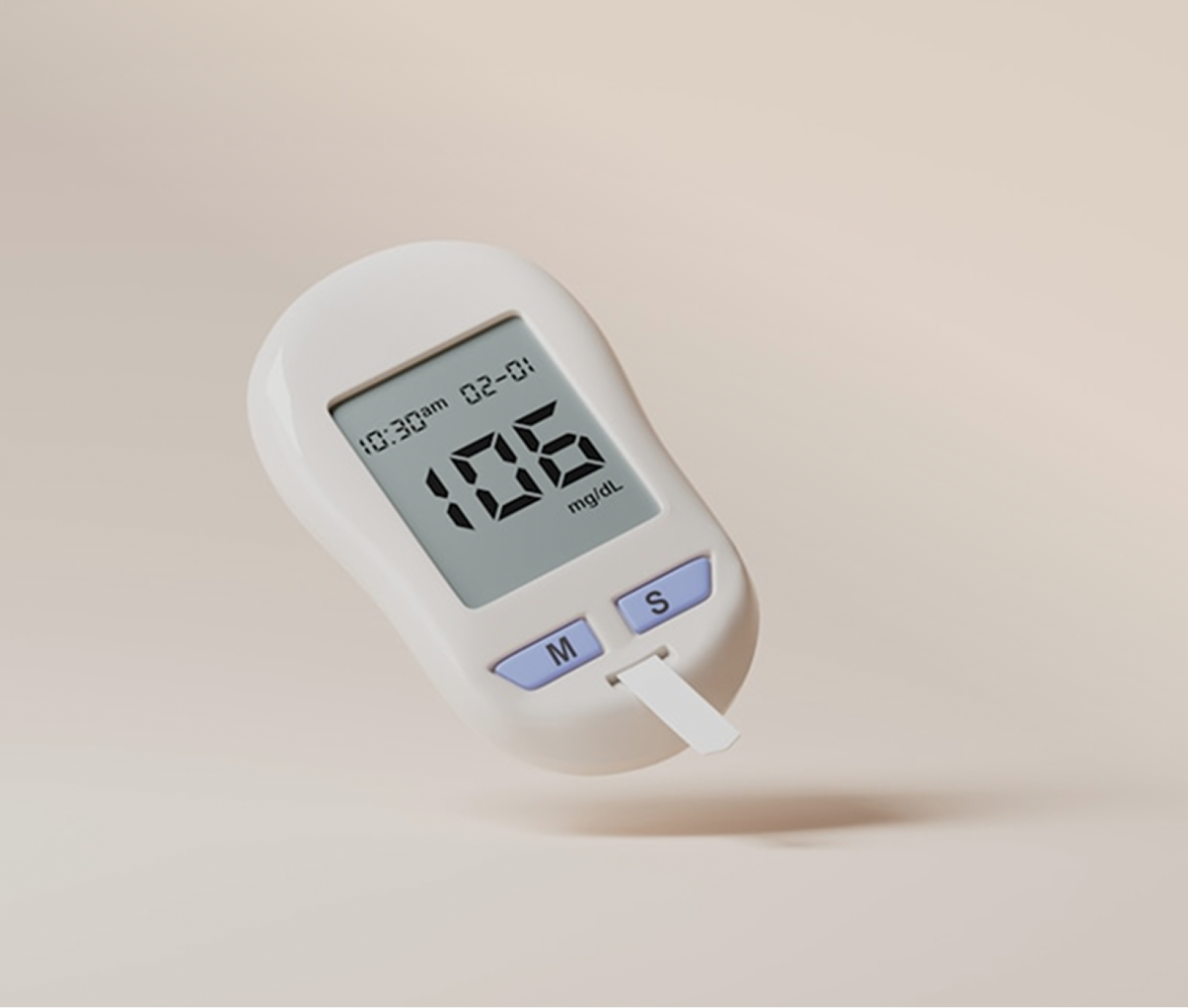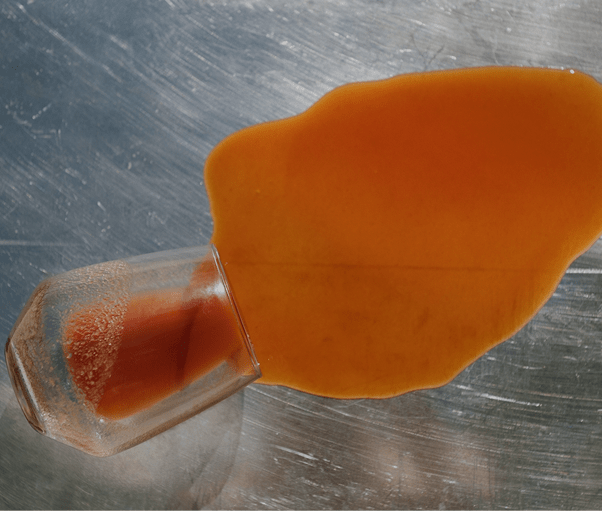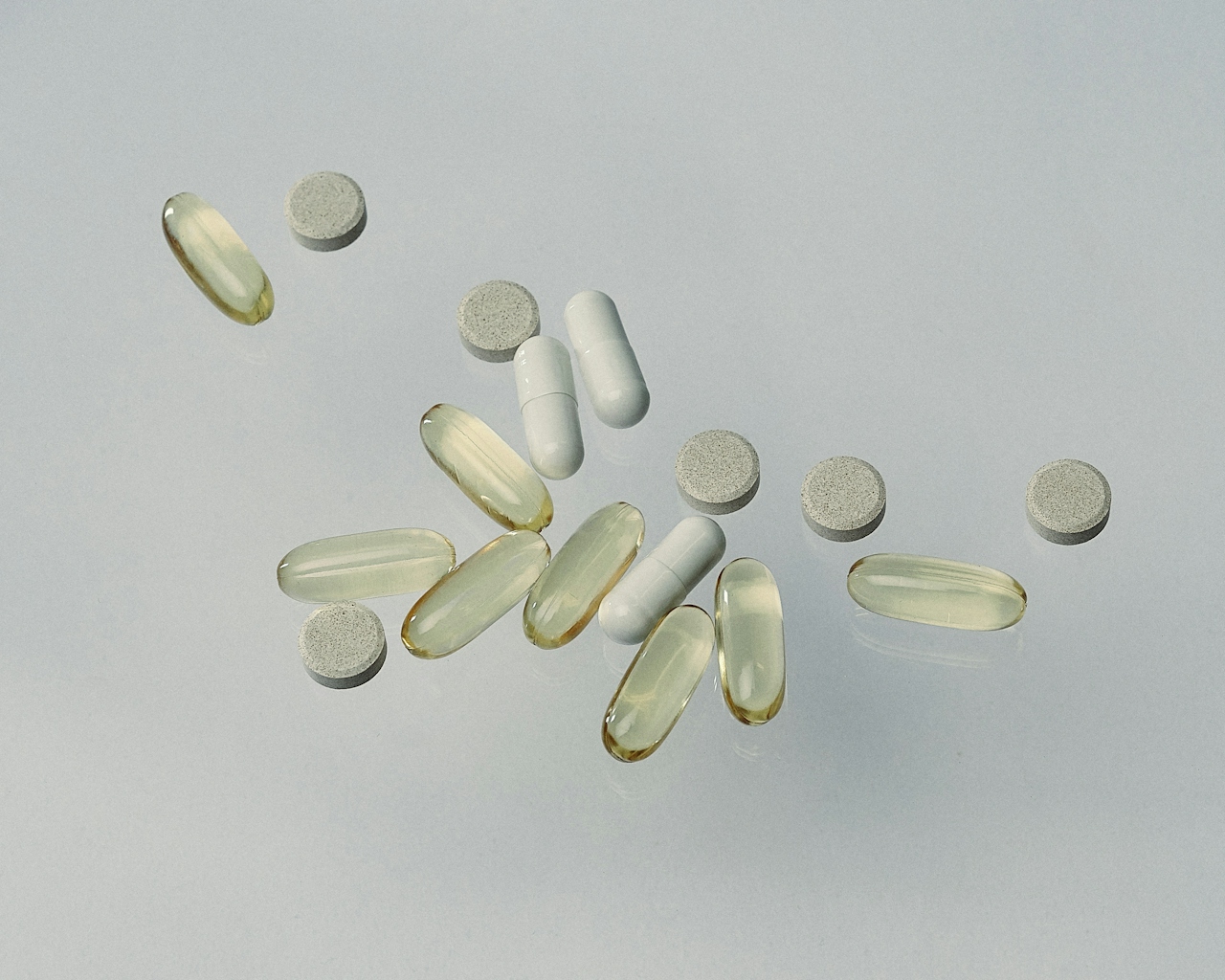
Peptides are being hailed as the next frontier in healthspan optimization. But with dozens of options and plenty of hype, it’s hard to know what’s legit—and what’s just good marketing.
In the last issue, we unpacked the science behind peptides: what they are, how they work, and which ones actually show promise for longevity, recovery, and more. We also broke down delivery methods, common misconceptions, and the questions you should ask before trying them.
Missed it? You can still catch up on the deep dive of The Peptides Issue.
Today, we’re featuring Nick Andrews, a biochemical engineer, peptide innovator, and the founder of several companies at the forefront of transdermal and regenerative health technology. With two decades of experience in pharmaceutical biotech, Nick brings a rare blend of deep scientific expertise and entrepreneurial execution—helping turn complex biochemistry into real-world tools for better health.
He’s the founder or cofounder of three peptide-based ventures: Push Patch, which uses electro-driven iontophoresis for NAD+ and peptides; Entera Skincare, a clinician-grade topical line; and Aseir Custom, focused on copper peptide cosmeceuticals. Across these, Nick has developed novel IP, pioneered device–drug combination platforms, and built scalable models for delivering peptides effectively—without getting stuck in regulatory quicksand.
His focus? Making peptide therapies easier to use, more effective, and more accessible for people seeking better energy, recovery, skin health, and long-term vitality.
In this Q&A, Nick goes deep on some of your most interesting peptides questions.
Q. Do peptides work better in isolation or in synergy with other compounds (e.g. NAD+, senolytics, adaptogens)?
Isolation Works But Biology Is Rarely Isolated
Running a single peptide is like hiring a top-notch carpenter: the wall will get fixed, just not as fast if the lights are dim, debris is piled everywhere, and the foreman is yelling. Clinical and pre-clinical data show that peptides alone can lower inflammatory markers, tighten collagen lattices, and improve metabolic state over several weeks.
For new users, that simplicity is powerful: one variable, one set of observations, a clear cause and effect. For those working with a clinician or comfortable guiding their own health, using multiple peptides can produce pronounced beneficial effects, outperforming each peptide alone without dose escalation.
Complexity Versus Clarity
It is tempting to stack everything at once, but each added layer turns a simple approach into a more complex cocktail. For newcomers, a single peptide run is still worthwhile. It lets you learn the cadence of biological change: days for subtle shifts, weeks for functional wins, months for structural readouts. We also must consider that just like with more mainstream modalities, everyone’s response can vary. Some people respond very quickly while others need time for their bodies to respond.
Bottom Line
Peptides are the architectural blueprints. Put them in an energy-starved, stressed, junk-filled construction site and progress will happen—slowly. Raise NAD+, clear senescent rubble, quiet the stress alarms, ensure foundational nutrients are available or pair complementary peptides, and the same blueprint can be rebuilt faster and more completely.
Whether you start with one tool or the full crew depends on experience, objectives, and the tolerance for biological complexity. The foundational value of a single, well-chosen peptide remains intact and is where most people should start to build a level of comfort and confidence in choosing a peptide-based approach to a health challenge.
Q. There's enormous emphasis on weight loss in the fitness world. What is your peptide advice for those of us ectomorphs at healthy or below average weights with no interest in—or need for—weight loss but rather a need to build muscle?
Virtually every time you hear peptides mentioned these days, it is dominated by weight-loss headlines. The short answer is: muscle building lives on a different biological freeway. Here’s how to navigate it.
Weight Regulation ≠ Muscle Construction
“Calories in vs. calories out” is a convenient cliché, but body composition is throttled by a mesh of hormone loops (insulin, leptin, ghrelin); epigenetic switches; endocrine-disrupting chemicals; circadian cues; stress hormones; and sleep architecture. GLP-1 agonists calm hunger signals and slow gastric emptying—terrific for shrinking the surplus that drives fat storage. But they do little to trigger the cellular programs that build muscle, or expand contractile protein. Their job is crowd control, not stadium construction.
For ectomorphs starting at “barely enough mass,” the priority is shifting amino acids toward myofibrillar protein synthesis, not curbing appetite. When your natural frame is light and narrow—classic ectomorph—you already burn calories like a hummingbird. Your daily amino-acid “budget” is small and constantly raided for liver gluconeogenesis, gut-cell turnover, and immune patrols. The muscle fibers you want to thicken (myofibrils) only receive leftovers after those housekeeping tasks are paid. So the mission is not to dampen hunger hormones (that’s a fat-loss play) but to reroute circulating amino acids away from background maintenance and into the contractile machinery of skeletal muscle.
The Growth-Hormone Axis: Still the Kingmaker
Muscle hypertrophy hinges on two pillars:
- Satellite-cell activation → new nuclei in muscle fibers
- mTOR-driven protein synthesis → thicker myofibrils
Endogenous growth hormone (GH) kicks off both steps by elevating hepatic and local IGF-1, which in turn lights up AKT/mTOR and satellite-cell proliferation pathways. Chronic supraphysiologic GH is undesirable and can produce a number of problems from desensitization or triggering unwanted effects, but rhythmic, physiologic pulses mimic youthful nighttime secretion patterns—enough to engage IGF-1 without tipping into acromegalic territory.
Ipamorelin at a Glance
Type: Pentapeptide, first highly selective GH secretagogue
Receptor: Ghrelin/GHSR-1a agonist
Effect Profile: Sharp GH pulse (20-30 min), minimal ACTH, cortisol, or prolactin rise
Appetite/GI: Weak orexigenic drive vs. native ghrelin—good for muscle gain without appetite spiking
Downstream: Increased IGF-1 (liver & autocrine), increased fatty-acid mobilization, increased nitrogen retention, increased sleep-stage 3 depth
Practical Upside: Supports lean-mass accretion, joint-tissue recovery, sleep quality with a low side-effect ceiling
Because ipamorelin’s growth hormone (GH) pulse is both fast and selective, it allows protein-synthesis signaling without the cortisol spikes seen in first-gen secretagogues (GHRP-6, hexarelin). Pairing ipamorelin with a GHRH analog like CJC-1295 (DAC) stretches the pulse, giving IGF-1 more runway for satellite-cell activation—useful for lifters who tolerate higher anabolic drive.
While there are multiple peptides beyond ipamorelin that can engage direct muscle building effects such as PEG-MGF, IGF-1-LR3 and Follistatin-344, these peptides tend to be more specialized and may not produce noticeable results outside of specific training settings.
The Potency-Versus-Tolerance Principle
In biology, leverage often carries cost: megadose GH or exotic myostatin blockers can accelerate growth but hike insulin resistance, edema, or organ strain. Controlled, physiologic pulses mitigate that tax.
Lifestyle still dictates 70% of the outcome:
- Caloric surplus biased toward leucine-rich protein (1.6–2.2 g / kg bodyweight)
- Progressive tension overload—mechanical strain is the primary signal to justify new muscle
- Sleep ≥7.5 h with intact slow-wave phases, where natural GH pulses cluster
- Stress management—elevated cortisol blunts mTOR and robs nitrogen
Key Takeaway
Peptides amplify the signal; they do not replace the foundational inputs. Weight-loss peptides make headlines because they solve an obvious societal pain point, but the physiology of adding lean mass is another domain entirely. For naturally skinny trainees, selective GH secretagogues—ipamorelin alone or in tandem with a GHRH analog—offer a “low-noise, high-fidelity” push on the body’s native growth circuitry. Layering IGF-1 variants, myostatin antagonists, and recovery peptides such as BPC-157 or TB500 can further widen the growth window, provided diet, training, and sleep still form the base of the pyramid.
Q. In your view, which peptide has the broadest systemic impact—and why? Is there one peptide everyone should be taking?
When the challenge is “pick one peptide that touches the most real-world problems for the most people,” I still lead with BPC-157. But I acknowledge that, in a world without price tags, MOTS-C makes a powerful counter-argument.
BPC-157
BPC-157 is a 15-amino-acid fragment of human gastric juice that functions as a roaming endothelial repair signal. It detaches caveolin-1 from eNOS, freeing nitric-oxide synthase and restoring perfusion in capillaries starved by hypoxia or inflammation. Once micro-vessels reopen, oxygen and nutrients reach every downstream cell and the local transcriptome flips from “damage control” to “rebuild.”
That single mechanism explains its multi-organ and multi-tissue impact:
-
- Gut: tight-junction sealing and EGF/FGF up-regulation speed ulcer and colitis recovery, already through phase-II testing
- Tendon and ligament: transected Achilles tendons in rats realign collagen faster and regain higher tensile strength
- Bone: RUNX2 activation yields denser callus and fewer non-unions in long-bone fractures
- Neurovascular tissue: post-ischemic brains show smaller infarcts and tighter blood–brain barrier junctions
- Vasomotor tone: aortic studies confirm dose-dependent modulation of NO output, evidence that vascular benefits are not tissue-restricted
The peptide is water-stable, doses in low micrograms, and a single 5-mg vial often covers a month—meaning genuine systemic leverage for roughly the cost of a dinner out. While BPC-157 is the go-to choice for most people, there are two practical cautions:
-
- The World Anti-Doping Agency (WADA) banned it in 2022.
- Any pro-angiogenic agent should be approached with caution in active cancer and under close guidance of a health care professional.
MOTS-C
MOTS-C is a 16-amino-acid peptide encoded by mitochondrial DNA. Under metabolic stress it exits the organelle, migrates to the nucleus, and re-writes transcription priorities: AMPK turns on, GLUT4 floods the sarcolemma, and lipogenesis genes shut down. In mouse and cell-culture work, that yields sharper insulin sensitivity, suppressed diet-induced obesity, and a marked rise in fat oxidation. MOTS-C also behaves like an exercise mimetic: a single pre-workout shot extended treadmill endurance 30–40 % in mice of all ages and improved late-life grip strength. Beyond metabolism, it nudges mesenchymal stem cells toward osteoblasts, mitigating bone loss in estrogen-deficient models.
This metabolic rewiring at the circuit-breaker level, while compelling, is not cheap. Effective human protocols hover around 10–20 mg, 2–3 times a week, for 6–8 week blocks. At $120–$200 per 10-mg vial (prices can vary widely depending on how the peptides are sourced), a full cycle can exceed $1,000–$2,800 before labs or syringes. That price narrows the audience to high-budget bio-optimizers.
How to Choose
- General population, finite budget, diverse wear-and-tear: BPC-157 wins on “repair per dollar” and logistical simplicity.
- Metabolic syndrome, athletic performance plateaus, no budget ceiling: MOTS-C offers mitochondrial and endurance upgrades that BPC-157 cannot match.
- Unlimited resources + holistic ambition: stack them; BPC-157 opens blood flow and tames inflammation, MOTS-C upgrades cellular energy economics, synergy at the capillary and mitochondrial levels.
In everyday reality, most people will get farther, faster by starting with BPC-157 and reserving MOTS-C for targeted interventions as their budget may allow.
Q. You don’t really feel peptides, so how can you truly measure if they are having an impact? What are the top things you track to measure peptide effectiveness?
Start with Body AwarenessInteroceptive research shows that a brief daily “body scan” measurably improves a person’s ability to detect subtle shifts in physiology—even after only eight weeks of practice. The method is dead simple:
- Morning check-in (2 minutes). Sit or stand still, close your eyes, and sweep attention from head to toe. Note joint stiffness, warmth or cool spots, tension in the gut or jaw, ease of breathing.
- Movement probe. Squat to the floor, twist at the waist, roll a shoulder. Register range of motion and any twinges.
- Evening replay (1 minute). Repeat the scan and ask, “What’s different from this morning?”
Over a few weeks, you can build a mental baseline so precise that a 5% reduction in knee creak or a subtle uptick in morning energy feels obvious, even though you never got a stimulant buzz from the peptides.
Layer Inexpensive Home Metrics
Once body awareness tells you something is changing, corroborate it with numbers you can collect without a clinic:
- Resting heart rate and heart-rate variability from any decent wearable. Vascular-repair peptides such as BPC-157 often lower RHR and raise HRV within 10–14 days by dampening systemic inflammation.
- Grip-strength dynamometer for $30 online. MOTS-C cycles that sharpen mitochondrial output tend to move this metric long before you add visible muscle mass.
- Bathroom scale + tape measure. A drop in waist circumference without weight loss (common with MOTS-C) signals a body-composition shift, not just water weight.
- Sleep-stage reports from your wearable; deeper slow-wave sleep is a recurring side benefit of balanced GH/IGF-1 signaling after ipamorelin.
Confirm with Targeted Labs
Every 4–6 weeks for recovery peptides, or every 12 weeks for metabolic/anti-aging stacks, pull repeat labs—same time of day, same lab company:
- hs-CRP and IL-6 for systemic inflammation (BPC-157 users usually see a downward trend).
- Fasting insulin and HOMA-IR for metabolic peptides (MOTS-C should tighten both).
- IGF-1 for GH secretagogues—look for a 20–40 % bump that stays within physiologic range.
- P1NP / CTX-I to prove connective-tissue turnover if you’re rehabbing tendons or bones.
- Zonulin or a lactulose–mannitol test if gut integrity is the target.
Structural Proof When Needed
Orthopedic or high-stakes neuro work deserves imaging: ultrasound or MRI on the same machine 6–8 weeks apart will show BPC-157’s orderly collagen realignment in a healing tendon. DEXA scans pin down lean-mass shifts, and carotid ultrasound tracks endothelial change for longevity protocols.
Pull the Threads Together
Body awareness flags the direction of change. Home metrics show that the feeling isn’t placebo. Labs validate molecular mechanisms. Imaging closes the loop on structure. When all four layers move the same way—less morning stiffness, better HRV, lower hs-CRP, cleaner MRI—you can be confident the peptide is doing real work, even though you never “felt” it kick in.
Train the perception first, gather the numbers second, and peptides move from invisible theory to visible, trackable results.
Q. What’s the most exciting peptide nobody’s talking about yet—but should be?
The peptide story that actually matters in 2025 is not a brand-new sequence spun out of an AI folding model. It is the delayed public debut of a handful of “half-legal veterans” that biohackers, injury-rehab clinicians, and anti-ageing circles have already trial-run in thousands of self-experiments over the past 10–15 years. Think of them as having completed a crowdsourced Phase IV long before they ever finished Phase II on paper. Now thanks to a sudden burst of political oxygen from figures like RFK Jr., who has promised to end what he calls the FDA’s “war on alternative medicine” and to fast-track stalled regenerative tools, the data those early adopters generated can finally translate into mainstream protocols.
Here are some “old” peptides ready to feel new.
BPC-157 (Bepecin)
Over two decades of underground use have mapped out everything from dosing to side-effect ceilings. Orthopaedic forums are full of before-and-after MRI uploads showing faster tendon realignment; gut-health groups share colonoscopy screenshots of ulcers closing in weeks rather than months. Academic confirmation is finally catching up: a peer-reviewed survey of its pleiotropic endothelial effects and a revived ulcerative-colitis Phase II dossier were both published in the past year. With toxicity concerns largely absent and a price point below $100 a month, BPC-157 is poised to jump from “biohacker staple” to first-line adjunct in sports-medicine and GI clinics.
Thymosin β-4 / TB-500
First isolated in the 1960s, TB-500 was forgotten until performance-horse veterinarians and later powerlifters noticed accelerated tendon repair. The peptide has now clocked over a decade of off-label human use, generating more functional-MRI and ultrasound evidence in private clinics than any NIH-funded trial ever did. There are expectations of new orthopaedic trials in Australia and South Korea this year, riding the wave of accumulated real-world data and patient-funded case series.
GHK-Cu
Dermatology has quietly used topical GHK-Cu for collagen since the 1990s, but systemic dosing never took off because nobody tracked its effects in a database. Biohackers changed that, logging thousands of self-reports that line up with transcriptomics studies showing the peptide reverses age-shifted gene expression in antioxidant and anti-inflammatory pathways. The combination of skin, joint, and possible neuroprotective benefits puts GHK-Cu on the brink of a supplement-to-drug upgrade once regulatory momentum builds.
SS-31 (Elamipretide)
A mitochondrial-targeted tetrapeptide with twenty years of venture-capital scars, SS-31 reached NDA submission for Barth-syndrome cardiomyopathy in 2024, then hit an FDA delay this spring. While regulators debate endpoints, athletes and chronic-fatigue patients have quietly compiled thousands of injections’ worth of lived-data showing improvements in HRV, VO₂ max, and delayed-onset fatigue. If the Barth verdict finally turns positive, the peptide will arrive pre-validated by real-world users rather than entering a vacuum.
Why Community Data Matters Now
- Volume and duration: Reddit threads, Longecity logs, and clinic EMR exports represent a de-facto longitudinal cohort larger and longer than most Phase II trials.
- Granular phenotyping: Early adopters track HRV, continuous glucose monitors, MRI scans, and genetic SNP panels, giving a richer mechanistic picture than standard adverse-event forms ever could.
- Dose-response mapping: Crowdsourced experimentation has already bracketed “works / no-effect” zones, so formal trials can start with tighter ranges and fewer patients.
- Economic proof: Real users have calculated cost-per-outcome for years comparing $30,000 surgeries versus $500 peptide cycles using real receipts, not hypothetical models.
The bottom line is that most exciting peptides in 2025 are not the shiny new acronyms lighting up biohacking circles. They are the veteran molecules, validated in tens of thousands of n=1 experiments, stockpiled in real-world outcome logs, and finally poised to clear the regulatory bottleneck. Liberation, not discovery, is the story to watch.
Disclaimer: This newsletter is provided for educational and informational purposes only and does not constitute providing medical advice or professional services. The information provided should not be used for diagnosing or treating a health problem or disease, and those seeking personal medical advice should consult with a licensed physician.

December 5, 2025

November 21, 2025

November 14, 2025

November 14, 2025

November 7, 2025

October 31, 2025

October 24, 2025

October 17, 2025

October 10, 2025


















































